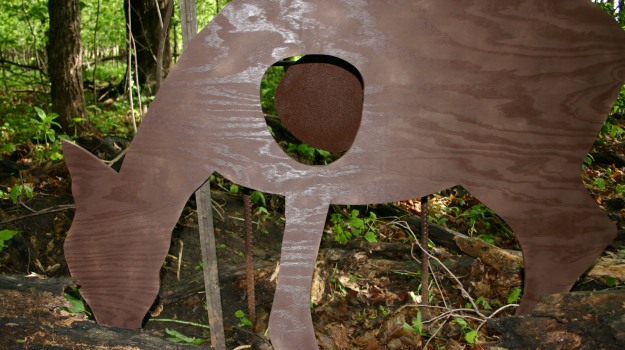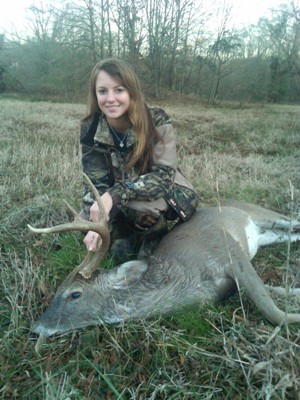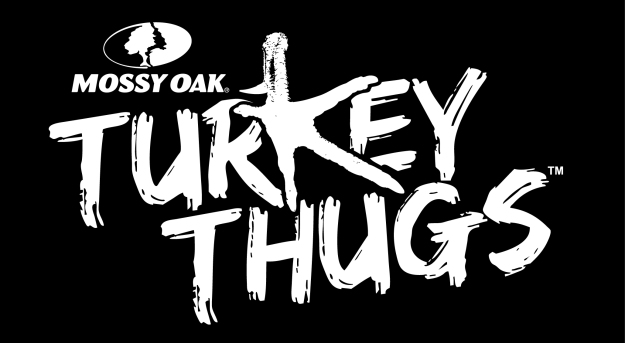
To Develop Confidence, Skill & Savvy
By Bill Miller
It doesn’t matter what stage you’re at in your hunting career, given the right conditions and the heat of the moment everyone of us can be susceptible to “buck fever.” Even those who have reached the stage where the pursuit is more about giving back and bringing newcomers into hunting than doing for ourselves, have to deal with fighting off yips and jitters in our mentees that may cause them to miss their first deer.
The thrill and adrenalin rush of having a big buck within shooting range is a major part of why we hunt and a reason why many of us choose to become GameKeepers. It’s exhilarating and certainly not a feeling we want to avoid or diminish. We just want to make sure that its debilitating effects don’t overwhelm us until after the shot is taken. The way to do this is through visualization of the moment of truth and creating “practice” as realistic as possible. Did you ever see an Olympic downhill skier going through all kinds of gyrations on the mountaintop before skating into the starting gate? They are skiing every inch of the course mentally before actually doing it. Hunters, especially new hunters, are well served by doing the same thing before they actually encounter a deer.
Bow hunters have it easy when it comes to creating realistic practice sessions. 3-D archery courses and clubs abound around the country and feature elevated shooting towers, unknown distances and realistic targets of just about every kind of critter at which it’s legal to sling an arrow. You can even haul a 3-D deer target out to your actual stand location and practice taking shots at the foam buck at each location at which you believe it’s likely you’ll spot a deer come season. That provides your mind the right kind of mental calisthenics to get it in shape to avoid target panic and buck fever.
It’s not as easy for gun hunters. Sessions at a formal range, punching holes in paper, shooting from a bench and shooting at known distances don’t do much for visualizing exactly what it will be like and exactly what you’ll do when a buck shows up in the woods. There are a few commercial operations like Spirit Ridge Rifle Golf in northern Utah sprouting up that offer the rifle hunter’s equivalent of a walk-through 3-D archery course, but chance are there’s not one of those in your back yard.
The good news is if you have access to a little bit of land, a couple power tools and a can of spray paint, you can get the same experience where you hunt.
The Spirit Ridge targets are life-sized, solid-color, plywood silhouettes they cut themselves. The chest and shoulder area “vital zone” is cut out as well. The silhouette is securely mounted on posts then a swinging steel plate is placed behind the opening that represents the vitals. The gong can be painted a contrasting color if the intent is to help a beginning hunter learn the vital hold zone, or it can be painted to match the color of the silhouette to maximize the reality of the target. When the bullet hits the steel plate the resulting “bong” is nearly as satisfying as the bass drum “boom” of a solid hit on a real buck.
Of course, there’s nothing that says you can’t shoot a foam 3-D archery target in front of a gong, but I have hard time paying the kind of money I have to lay out for a good 3-D target, then abusing it with rifle bullets and shotgun slugs.
 A life-size whitetail silhouette can easily be made from a 4’x4’ sheet of ½-inch plywood or particleboard. Including paint, it costs less than $20 and can last for years. Those who farm for wildlife benefit from being good with their hands, too, and this is a simple woodworking project that can introduce those skills to budding Gamekeepers. Start on the Internet finding pictures of deer in “shooting situation” poses. Print them out, then use the Art 101 grid system to transfer the outline to life-size on the plywood. A good rule of thumb for a relaxed, standing whitetail is 36-40 inches from backline to ground and about the same from the base of the neck to the back of the rump.
A life-size whitetail silhouette can easily be made from a 4’x4’ sheet of ½-inch plywood or particleboard. Including paint, it costs less than $20 and can last for years. Those who farm for wildlife benefit from being good with their hands, too, and this is a simple woodworking project that can introduce those skills to budding Gamekeepers. Start on the Internet finding pictures of deer in “shooting situation” poses. Print them out, then use the Art 101 grid system to transfer the outline to life-size on the plywood. A good rule of thumb for a relaxed, standing whitetail is 36-40 inches from backline to ground and about the same from the base of the neck to the back of the rump.
If you have metalworking skills, too, you can make your own steel plates and supports, or these can be sourced from big shooting supply houses or your local welding shop. If a steel gong backer isn’t in the budget, another way to get instant feedback of a killing hit is to put an inflated kid’s party balloon stapled in the silhouette’s vital opening. Of course, the drawback is that every good shot requires another trip to the target to put up another balloon. Though the exercise is an added benefit in preparation for the upcoming hunting season, this slows things down and young hunters may lose interest.
These silhouette targets are versatile training aids. They aid in developing game spotting and range estimation skills when positioned in cover. You can set them in such a way as the deer is mostly obscured except for the opening to the vitals – a situation that’s often encountered in real hunting.
The silhouette can be used in teaching important lessons in the proper position of an animal for a shot to be taken. They can be taken to an actual stand location, just like 3-D target, and shot from your actual stand in locations where you expect to see deer during the coming season. You can position them at safe shooting locations around your property and create your own rifle golf course.
With a new hunter, not shooting a target is just as important as banging away at them. For example, position a silhouette in a location at which a shot would not be safe like the skyline on a ridge top. Take the young hunter on a route past that target, spot it, and start to get set up for a shot. The goal is for the neophyte to stop and tell you there’s no safe shot. If he or she doesn’t say “whoa,” you pull the plug before a round is in the chamber. Go through an explanation of why it’s an unsafe scenario and no shot can be risked. Repeat on different days in different locations until they understand.
These silhouettes are endlessly adaptable to hunting scenarios of all kinds. You can shoot them with rifles, muzzleloaders, handguns and shotgun slugs. They can easily be patched and repaired to last for years and will help anyone better visualize the “moment of truth” and avoid buck fever next season.




























